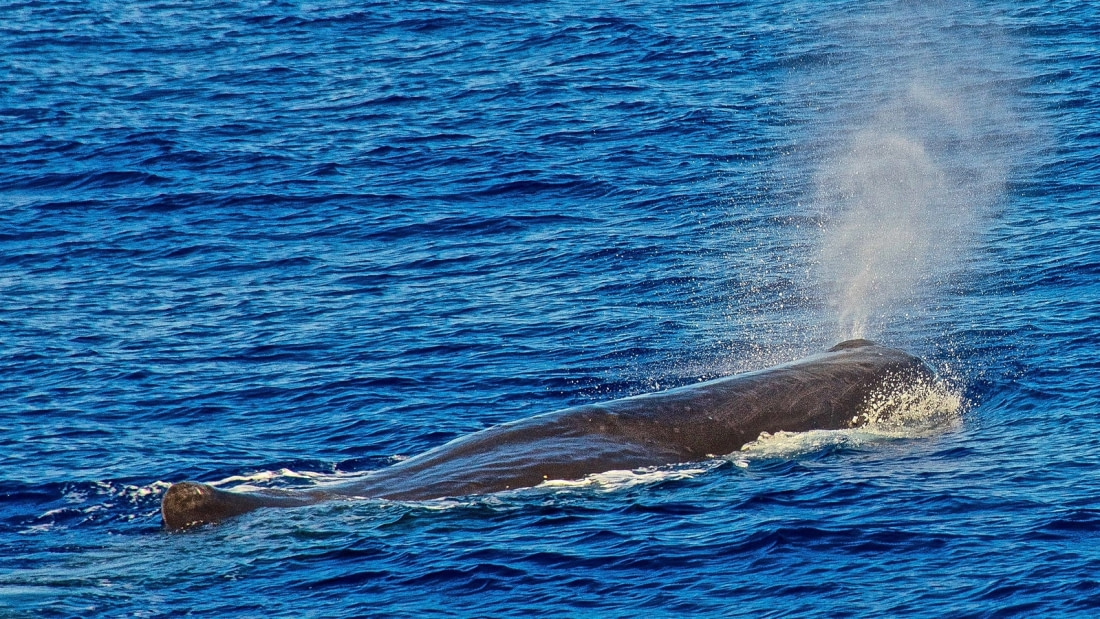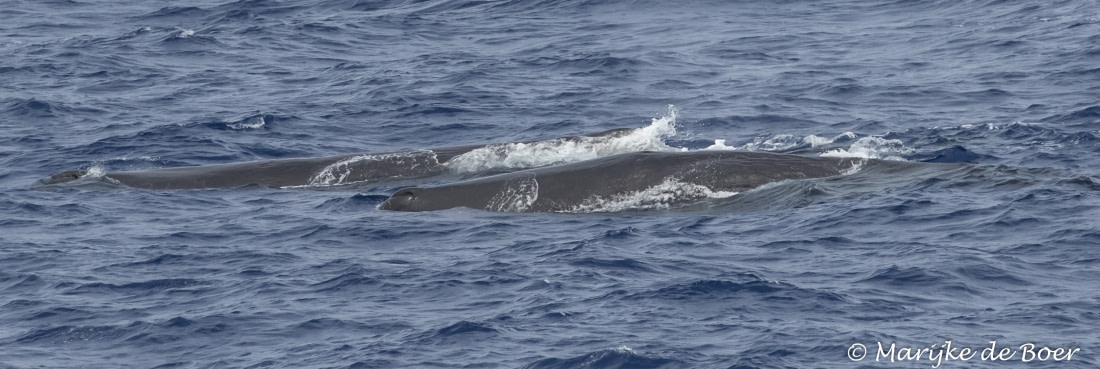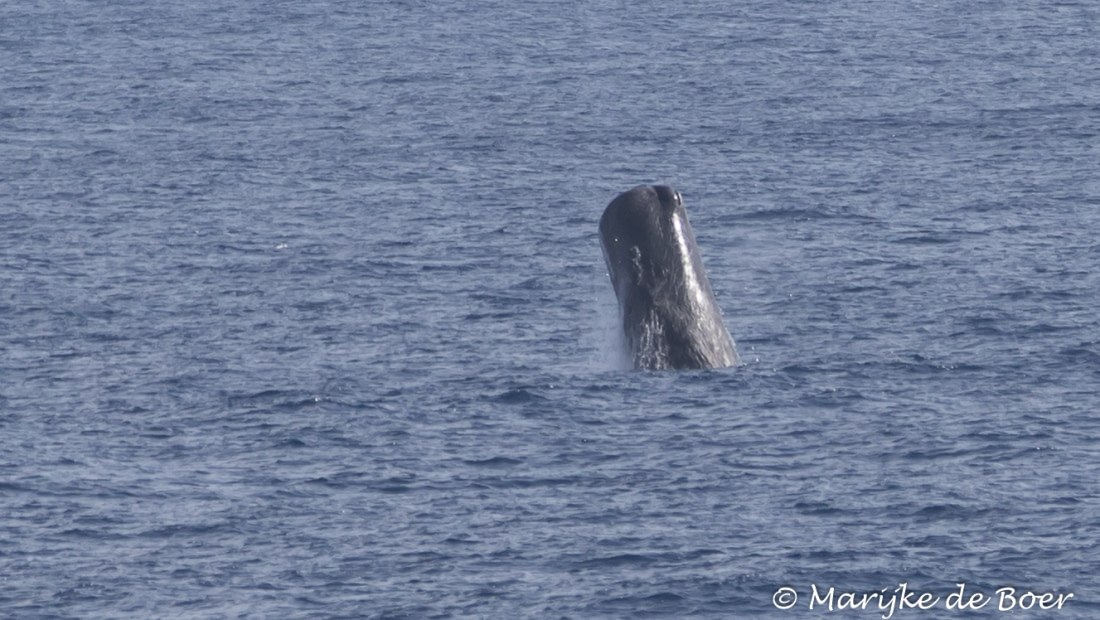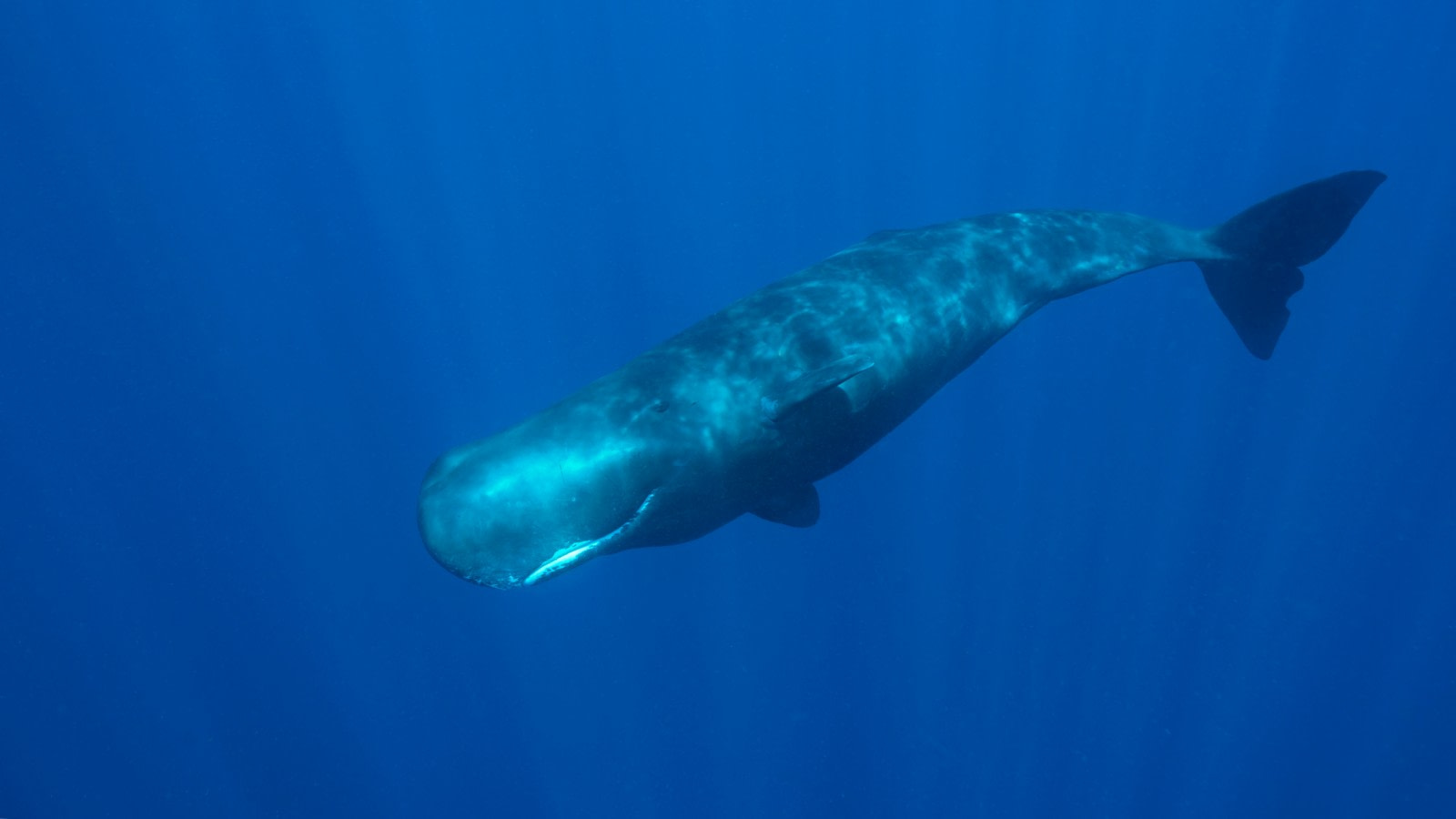Name: Sperm whale (Physeter macrocephalus)
Length: 16-20 metres (53-66 feet)
Weight: 40,000-55,000 kg (88,000- 12,000 pounds)
Location: Sub-Arctic, sub-Antarctic, and Atlantic waters
Conservation status: Vulnerable
Diet: Mainly squid, but also fish, octopi, rays, and megamouth sharks
Appearance: Long, block-shaped head comprising up to 1/3 of the whale's body, with grey or black skin, which tends to be wrinkled behind the head and on the sides. Short, wide flippers, broad, triangular fluke, and a single blowhole.

How do sperm whales hunt?
Sperm whales consume over 900 kg (almost 2,000 pounds) of food daily. They dive between 300 and 1,200 metres (990 and 4,000 feet) to hunt, sometimes reaching depths of 2 km (1.2 miles). Dives last about an hour. Using echolocation, they produce clicks to locate prey. Their bottom jaw teeth are 18 to 20 cm long (7.1 to 7.9 inches), fitting into sockets along the palate. Upper teeth never grow out. Sperm whales and giant squid are believed to be natural enemies. Pods can work together to herd smaller fish into clumps for easier feeding.
Are sperm whales social?
Adult males live alone when not breeding, while females and offspring form pods of up to 20. Males leave around 4 years old, sometimes forming their own pods, which eventually split. Adult males venture into colder waters, while females and young stay in tropical and temperate zones. Sperm whales engage in social behavior like calling and rubbing against each other. When attacked, they form a "marguerite formation" to protect vulnerable members.

How fast can sperm whales swim?
Sperm whales cruise at 5 to 15 kph (3 to 9 mph) and can reach speeds of 35 to 45 kph (22 to 28 mph) for about an hour.
What are sperm whale mating rituals like?
Males reach sexual maturity at 18 years, females at 9. Males fight for mating rights and breed with multiple females. Pregnancy lasts about 15 months, resulting in a single calf. The pod forms a protective barrier around the birthing mother. Females mate every 4 to 20 years until around 40 years old.
How long do sperm whales live?
Sperm whales live about 70 years, with males reaching full size at around 50.
How many sperm whales are there today?
Estimated global population is about 360,000, making them one of the most abundant great whales.
Do sperm whales have any predators?
Orcas are the main natural threat, along with pilot whales and false killer whales. Orcas target pods, but male sperm whales are usually too large and aggressive. Sperm whales were historically hunted for:
- Spermaceti - Used in pharmaceuticals, candles, ointments, cosmetics, and weatherproofing
- Ambergris - Formed in the digestive tract, used in perfumes

Do sperm whales attack people?
Sperm whales generally avoid ships but have occasionally rammed small boats. Some scientists believe this is due to past human aggression, while others think it is accidental.
Seven suitable sperm whale facts
- Sperm whales have the largest heads and brains on Earth, with brains five times heavier than a human's.
- The white whale in Moby Dick was based on two real sperm whales: one that sank the ship Essex and an albino named Mocha Dick.
- Sperm whales are named after the spermaceti found in their bodies.
- Sperm whale feces fertilize the ocean, aiding phytoplankton growth.
- Male sperm whales occasionally attack orcas to compete for food.
- A sperm whale's heart weighs about 125 kg (275 pounds), similar to two average adult males.
- The highest sound pressure level recorded from an animal was from a sperm whale, reaching 235 dB, comparable to a Saturn V rocket.






